How To Control Fruitworms - Getting Rid Of Fruitworms Naturally
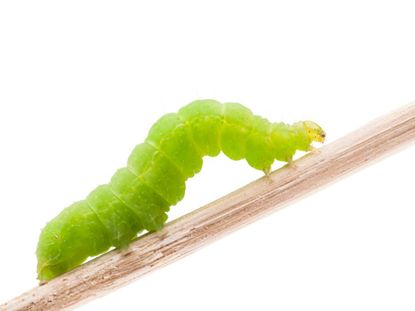

There are several types of fruitworms, which are the larvae of different moth species in the genus Lepidoptera. The larvae are pests of fruit trees and usually present as thick green caterpillars. Fruitworms live in their host trees and cause damage to new growth, leaves, flowers, and fruit. The damage is usually discovered when it is too late for fruitworm control. Learn how to control fruitworms to prevent this damage and scarring on your home fruit crop.
Green Worms on Fruit
Gardeners must closely monitor fruit trees to ensure that any number of pests do not infest them. Visual inspections during early to mid-spring may yield green worms on fruit. There is only one generation per year, but the larvae pupate and overwinter in the ground to emerge and feed when tender shoots and buds appear. The green worms on fruit may be armyworms or climbing cutworms depending on their behavior.
- Armyworms move in large groups to ideal feeding areas and cause widespread damage.
- Cutworms begin feeding on the roots of young plants and migrate to the branches of trees as new shoots appear.
Green fruitworms are the most common, but there are several other types of fruitworms.
Other Types of Fruitworms
Among these pests are numerous types of fruitworms, which are found across the country. In the family Noctuidae, there are also pyramidal and speckled fruitworms. The eggs are a fraction of an inch (2.5 cm.) and the adult moth lays them on the stems and leaves of host trees. Speckled fruitworms are over an inch (2.5 cm.) long with stripes and dots along the length of the body. The pyramidal larvae start out cream colored and turn green after the first life cycle. They then sport five strips and a hump on the dorsal end. The common green fruitworm is a little smaller than the other species and starts out cream, then turns yellow and finally light green.
Damage from Fruitworms
The larvae feed on a variety of deciduous plants and widely infest cherry, pear, and apple trees. Fruitworm feeding does not seriously affect the health of trees, but they can compromise the quality and amount of harvest. Their feeding activities on buds result in flower drop and any later feeding can cause early abortion of the growing fruit. Fruits that make it to harvest are distorted and have cork-like scars. Inspection and manual management is generally enough fruitworm control for the gardener with only a few plants.
How to Control Fruitworms
Fruitworm control starts with careful monitoring. You can hand pick the larvae off small trees. Removing the larvae early will prevent later generations. Watch for damage to terminal shoots and bud injury. Small fruits that are forming may have scars and brown scabs, which indicate fruitworm feeding. Getting rid of fruitworms naturally is preferred on plants with edible crops. You can reduce the population of adults with sticky traps. Bacillus thuringiensis (Bt) has shown to be moderately effective for getting rid of fruitworms naturally. There are other biological controls, such as certain wasps and nematodes, which are only practical in minor infestations. If the pests consistently plague you, uses an insecticide coded for codling moths and apply at bud stage and again after petal fall.
Gardening tips, videos, info and more delivered right to your inbox!
Sign up for the Gardening Know How newsletter today and receive a free download of our most popular eBook "How to Grow Delicious Tomatoes."

Bonnie Grant is a professional landscaper with a Certification in Urban Gardening. She has been gardening and writing for 15 years. A former professional chef, she has a passion for edible landscaping.
-
 Want a Backyard Mini Orchard? Create Your Own Container Orchard
Want a Backyard Mini Orchard? Create Your Own Container OrchardEasier to care for in small spaces, a backyard mini-orchard makes sense for busy gardeners and juicy fruit is the reward.
By Teo Spengler
-
 Urban Beekeeping Guide: Top Tips For Raising Bees In The City
Urban Beekeeping Guide: Top Tips For Raising Bees In The CityUrban beekeeping can be a rewarding and appreciated pastime, but first be sure it’s legal in your city and learn the ropes of beekeeping.
By Mary Ellen Ellis
-
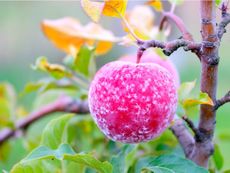 How To Protect Fruit Trees From Frost And Freeze
How To Protect Fruit Trees From Frost And FreezeChoosing fruit trees appropriate for your growing zone is best, but you still may need to protect them from extreme cold. Read how.
By Bonnie L. Grant
-
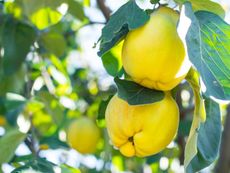 Best Plants For Late Summer and Fall Fruit Harvest
Best Plants For Late Summer and Fall Fruit HarvestEven if you don’t have the optimal conditions for more common fruit trees, there are other end of summer fruits to enjoy.
By Teo Spengler
-
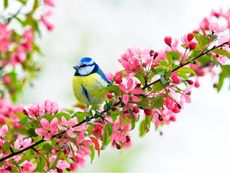 Best Native Fruit Trees To Support Wildlife
Best Native Fruit Trees To Support WildlifeIf you want trees that will attract and feed wildlife, learn the best kinds of edible fruit and nut trees to plant for inviting specific creatures.
By Teo Spengler
-
 Orange Fruit Varieties: Growing Fruits That Are Orange
Orange Fruit Varieties: Growing Fruits That Are OrangeOrange colored fruit isn’t limited to the citrus orange. There are plenty of other orange colored fruit varieties, each packing a healthful punch. Read on for more.
By Amy Grant
-
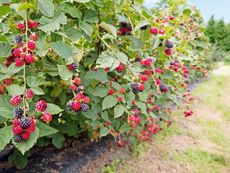 Everbearing Plants: Learn About Everbearing Varieties Of Fruit
Everbearing Plants: Learn About Everbearing Varieties Of FruitWhat does everbearing mean? And more importantly, how do everbearing varieties differ from non-everbearing types? Read on for more.
By Laura Miller
-
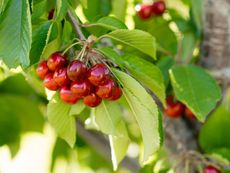 Plant A Red Fruit Garden: Growing Fruits With Red Flesh
Plant A Red Fruit Garden: Growing Fruits With Red FleshPlanting a red fruit garden may seem a bit whimsical. That is, until you realize the health benefits of consuming fruits with red flesh.
By Laura Miller
-
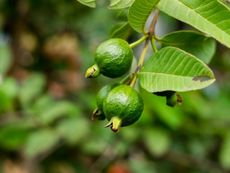 Heat Tolerant Fruits - Growing Fruit In Hot Weather
Heat Tolerant Fruits - Growing Fruit In Hot WeatherSome fruit grows in extreme heat naturally. But there are also specially cultivated, heat-tolerant varieties. For more information on heat tolerant fruits, read on.
By Teo Spengler
-
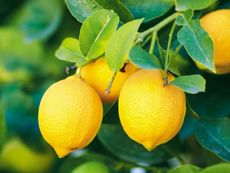 Yellow Fruit Varieties - Growing Fruit That Is Yellow
Yellow Fruit Varieties - Growing Fruit That Is YellowWhat fruit is yellow? There's more than the bananas at the supermarket. Try growing yellow fruit for a consistent supply of sunny food.
By Bonnie L. Grant